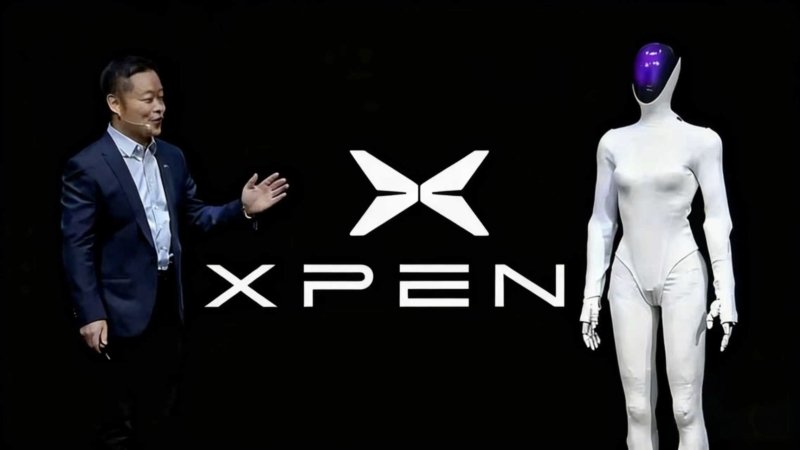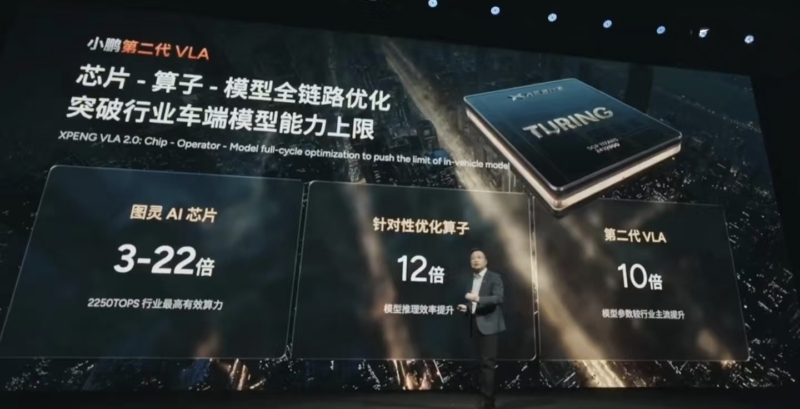Xpeng 2025 AI Day: humanoid robot, 6-seat modular flying car, and navigation-free robo cars
At the Xpeng 2025 AI Day, Xpeng unveiled a series of next-generation mobility and robotics innovations, including navigation-free robo cars, L4-level Robotaxis, the 6-seat modular A868 flying car, and the new-generation Iron humanoid robot. The announcements also confirmed Volkswagen as the first strategic partner for Xpeng’s second-generation VLA (Vision-Language-Action) system and Turing AI chips. Together, these developments highlight Xpeng’s expanding ecosystem for autonomous driving, personal air mobility, and humanoid robotics.
Xpeng’s second-generation VLA model will be open source for global commercial partners. VLA 2.0 forms the computational foundation for Xpeng’s next-generation intelligent mobility, spanning vehicles, Robo cars, Robotaxi systems, modular flying cars, and robotics. The system operates on Alibaba Cloud’s computing cluster, which is currently equipped with 30,000 GPUs and is expected to expand to 50,000–100,000 GPUs next year. VLA 2.0 uses a 720-billion-parameter architecture and full-chain updates every five days. It enables independent scenario reasoning, allowing vehicles to respond to hand gestures, traffic lights, and pedestrian signals. Its “small road NGP” function reportedly improves performance on complex roads by up to 13 times compared with the previous version.
A key addition is a navigation-free assisted driving mode that complies with international legal frameworks. This feature allows vehicles to operate without preloaded route data in any region. Pilot rollout for pioneer users is scheduled for December 2025, with full deployment on Xpeng top-end ultra models, Xpeng P7 Ultra and Xpeng G9 Ultra, expected in the first quarter of 2026.
Volkswagen has been confirmed as Xpeng’s first strategic customer for the VLA 2.0 model. In addition, Xpeng’s self-developed Turing AI chip has been officially selected for use in Volkswagen vehicles. This marks the sixth collaboration between the two companies, following earlier joint work on electrical architecture systems and ultra-fast charging networks.
The VLA model works together with Xpeng’s VLM (Vision-Language Model) system, enabling ultra-low-latency interaction between the driver, vehicle, and autonomous system. The in-cabin processor delivers 750 TOPS, supporting multilingual voice assistants, faster response speeds, enhanced privacy protection, and expanded functionality. Together, VLA 2.0 and the Turing AI platform form the computational core of Xpeng’s next-generation mobility ecosystem.
Looking ahead, Xpeng plans to launch an L4-level experience version called Robo on select models in 2026. The Robo version will feature four Turing chips delivering 3,000 TOPS of computing power and two driving modes, offering higher autonomous driving capabilities than the Max and Ultra versions.
Xpeng will also introduce three Robotaxi models next year with similar hardware configurations. The vehicles, designed for Level 4 autonomous driving, will begin trial operations in cities such as Guangzhou in China. They will feature external interaction functions to display driving intentions and will support an open SDK for global partners. Amap has been confirmed as the first global ecosystem partner for the platform.
Xpeng also showcased its A868 modular tilt-rotor flying car under the Xpeng Aridge brand at the 2025 Tech Day. The A868 is a hybrid vehicle capable of carrying six passengers with a maximum range of over 500 km and a top speed exceeding 360 km/h. It uses vertical takeoff, eliminating the need for a runway.
The A868 is part of Xpeng Aridge’s plan to develop two flying mobility systems: a land-based personal low-altitude flight experience for 2026 mass production, and the A868 for longer multi-passenger trips. Xpeng also announced the industry’s first flying car-specific license, with one-on-one professional training. The system is designed for simplicity, allowing “single-hand flight” using just one display and one control stick.

In robotics, Xpeng unveiled the new-generation Iron humanoid robot, designed for easier commercialisation, broader applications, and data collection. Iron features natural, fluid movements, a highly articulated human-like body with 22 degrees of freedom in its hands, a biomimetic spine and muscles, and a 3D curved head display for interactive communication. It is powered by three Turing AI chips and Xpeng’s second-generation VLA system, delivering 2,250 TOPS for advanced dialogue, walking, and interaction. IRON uses an all-solid-state battery for lightweight, safe operation and includes active safety and privacy protections. Xpeng plans large-scale production by the end of 2026 and will open an SDK for global developers to build a humanoid robot ecosystem.
Looking ahead, Xpeng aims to become a global company with embodied intelligence. Its new headquarters and intelligent manufacturing facility in Guangzhou will officially open in December, with visits available by appointment. The facility features multi-level automated parking and an exhibition space showcasing Xpeng’s mobility and robotics innovations. The company is also expanding offices nationwide, including Beijing, Shanghai, Wuhan, and Shenzhen, as it prepares for large-scale production of robots, robo cars, Robotaxis, and modular flying vehicles. These developments underscore Xpeng’s long-term vision of integrating advanced physical AI technologies across global mobility and robotics platforms.






